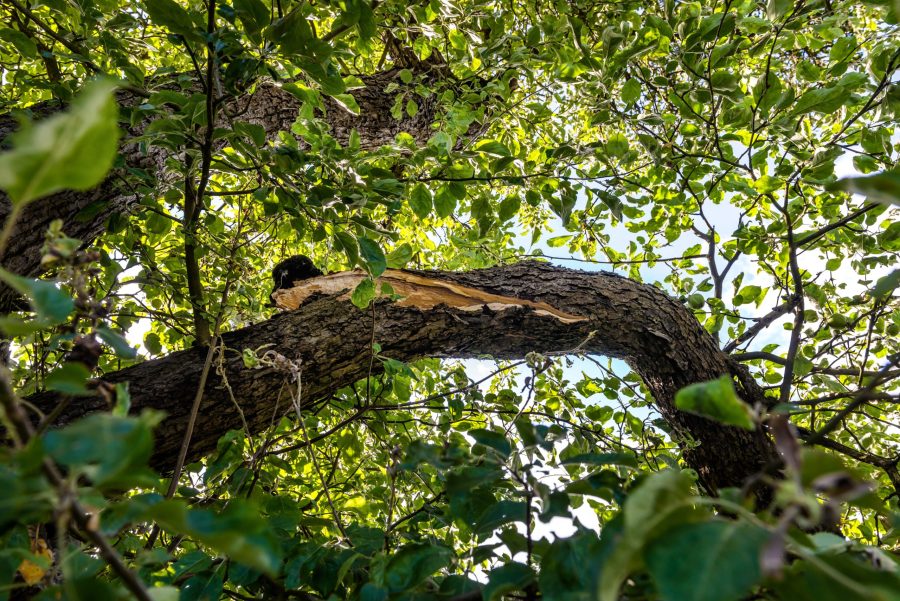
Everyone loves natural settings, and tree foliage often enhances a property for beauty and enjoyment. However, when branches start to die from disease or aging, they can cause serious damage to your home and require costly repairs. If you have trees near your home, chances are some of their branches are close to or perhaps hanging over your house. While your trees may look quite beautiful, those branches could be harmful to your property now or in the future. Thus, it’s best if you decide to tackle those troublesome tree branches before problems arise. If you want some tips on how to do so, here are a few that always work wonders with all types of trees.
Clean Debris From Roofs and Gutters
Major damage can occur when a dying branch falls onto your home’s roof. It might knock off some shingles or displace chimney bricks. Gutters and downspouts might be affected. Even minor damage may potentially cause a roof leak, which could let rain and ice moisture into your home to cause interior damage as well. Scheduling a roofing repair expert to remove the branch and repair the damage is recommended.
While you may have your eyes mostly on those big tree branches, the smaller twigs, leaves, and other debris can be wreaking havoc with your gutters and shingles. If you fail to clean out your gutters regularly, the result can be deteriorating shingles, which can result in water leaks inside your home as well as foundation damage.
Remove Dead Limbs
If you have mature trees near your roof, some of them may contain dead limbs or ones that are diseased and dying. Should this be the case, take steps to remove these limbs as soon as you can. After all, all it would take is one strong gust of wind to send a large limb crashing onto your roof, which could result in substantial damage requiring residential roofing repair or replacement. It’s important to make sure that your roof is durable enough to remain intact if a tree branch happens to fall onto it during a storm.
Care for Your Lawn
When large limbs tumble into your yard from standing trees, they can make a huge mess. Heavy boughs will need to be sawed into pieces for removal. If they are chipped into mulch, you might have a big job of clearing the extra woodchips flying out of the grinder or chipper from your lawn. Fallen tree branches can damage the garden or the kids’ outdoor playset. Routine lawn care like mowing and weeding may have to wait for the branches to be removed, which can take days.
Prune Young Trees
If you have trees in your yard that have just been planted recently, pruning their branches regularly will help your roof stay in excellent condition. Since pruning will help control growth, you can maintain your trees in a way that keeps them looking great, while at the same time ensuring they won’t damage your roof. Consider pruning your trees around winter to avoid damaging them. Over-trimming a tree can make it susceptible to disease. If you are not confident in your pruning skills, consider working with an expert.
Take Safety Precautions
If you are aware of dead tree branches that are ready to fall, keep everyone away from that area to avoid injury if a branch tumbles from the tree unexpectedly. Fallen branches can be hazardous if the kids climb on them, or if they begin to roll down an incline in your yard. Dying or not, branches might attract pests like wasps or bees that build nests and present a risk of stinging anyone who approaches. Snakes like to nest in woodpiles or under dead branches, as do animals like mice, rats, chipmunks, or other wildlife.
Inspect Your Shingles
Once your home’s roof is in place, don’t make the mistake of never looking at it closely for another decade or two. Instead, make it a practice to regularly inspect your roof’s shingles for any signs of damage or other problems. For example, after a storm, inspect your roof to make sure no shingles are loose or missing. Also, if you have wildlife around your home, inspect your roof to ensure critters are not tearing up your roof to gain access to your attic.
Consider Future Damage
Other problems that may arise from dying tree branches include termite infestations. Once they get into the tree near your home, the attic or basement of your home may be next. Dead branches falling across your driveway could force you to park on the street where your vehicle is at greater risk of being hit until the branches are cleared. If a dying branch from a tree on your property lands on a neighbor’s property, like a fence or shed, you might not legally be liable to pay for the repairs. But the relationship with your neighbor may become tense if you don’t.
If you notice any problems with your roof that are directly related to nearby trees, address these issues at once. Whether it’s trimming a few branches here and there or making sure twigs are not clogging gutters and rotting shingles, addressing small problems before they turn into major problems will save you money and give you peace of mind. Don’t wait for dying tree branches to cause pricy problems. Have your trees checked by an expert to find potential problems and to remove decaying branches before they start to fall.
